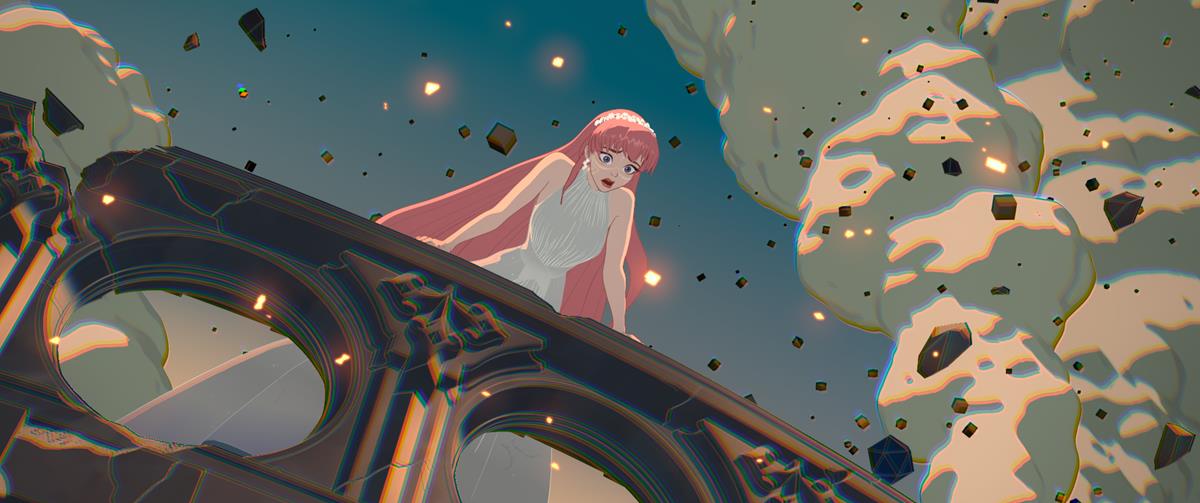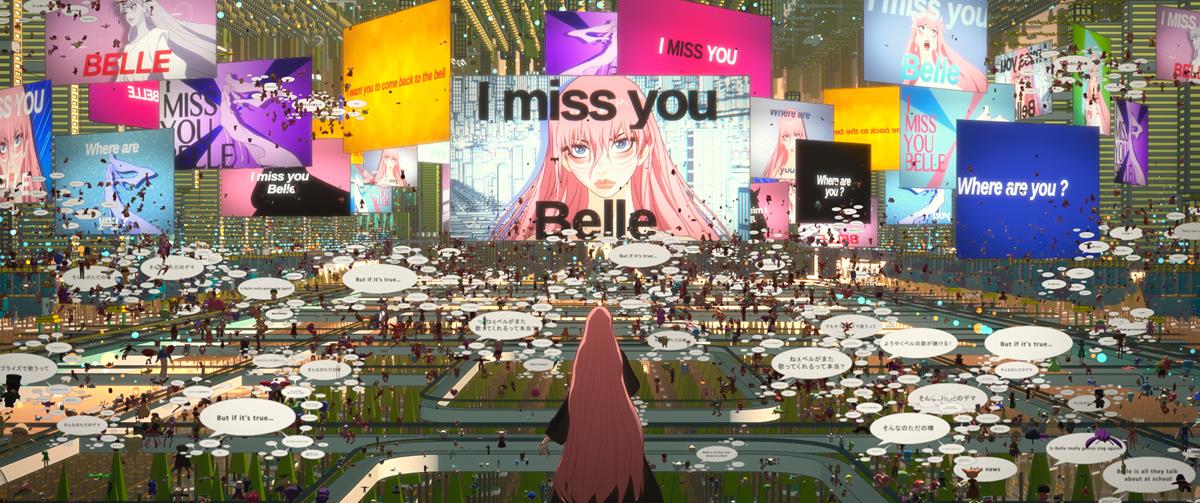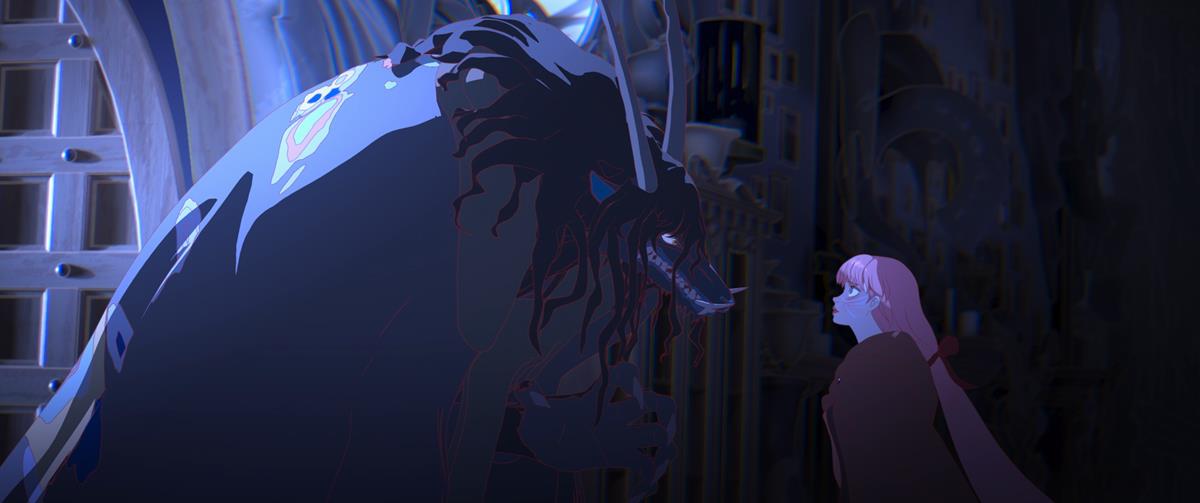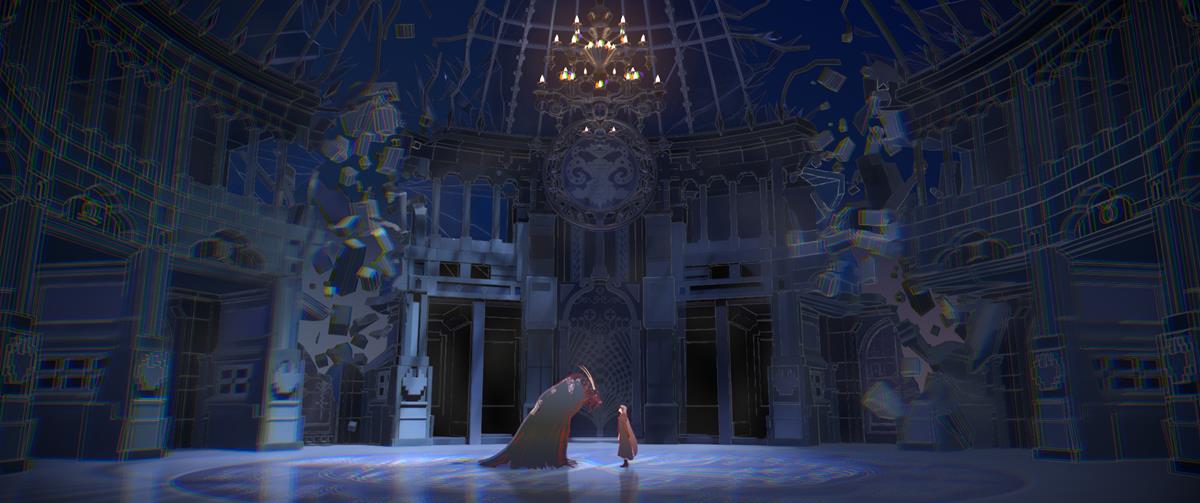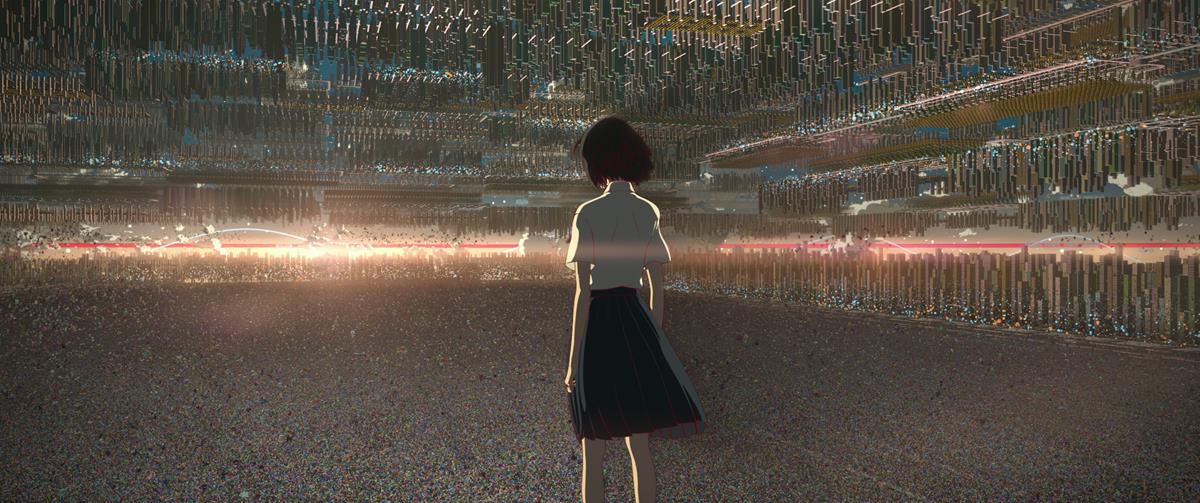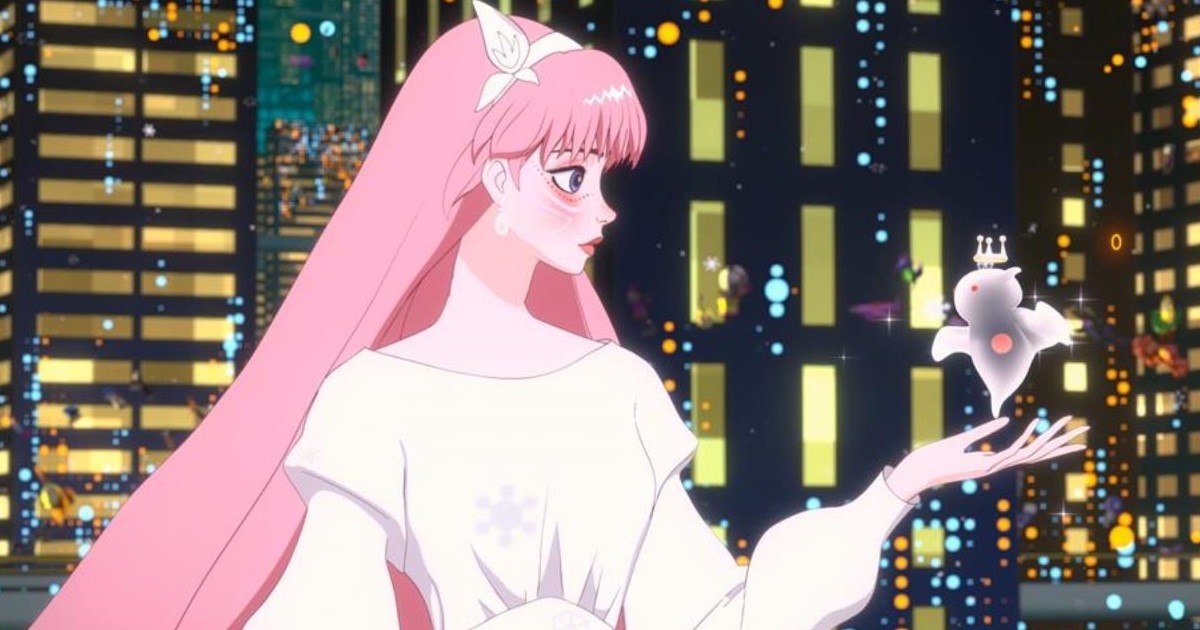
“You can’t start over in reality, but you can start over in U,” a narrator promises at the start of Belle, a refreshing new take on the metaverse as a sanctuary for young people.
This is the Japanese animated feature from director Mamoru Hosoda about a lonely teenage girl who becomes a global singing star through her alter ego in the online world of “U.” In a meta twist, the hero of Belle can be followed on Instagram.
Belle does not gloss over the harmful aspects of digital life such as online abuse, viral gossip and doxing (publicly revealing personal information), writes Steve Rose in The Guardian, “But, rather than portraying the online world as a place of cruelty and corporate overreach, it suggests it could be one of sanctuary, even salvation, especially for young people.”
READ MORE: Bring on the metaverse! How Belle depicts the future as a psychedelic wonderland (The Guardian)
Vulture critic Alison Willmore puts it succinctly: “Belle is an explicit attempt to wed the fairy tale with the high tech, retelling Beauty and the Beast by way of social media.”
READ MORE: Belle Is a Spectacular Retelling of Beauty and the Beast by Way of the Metaverse (Vulture)
In interview with The Verge, Hosoda explains his idea:
“In Beauty and the Beast, the beast obviously has this very vicious and violent-looking exterior, but what’s inside is quite different. In a similar way, with the invention of the internet, people have the version of ourselves that exists in reality and another projection that exists in the internet. So, there’s a similar duality happening, and I thought that would allow the narrative, and a lot of those themes, to come forward.”
The creator of Digimon (2000) and Summer Wars (2009) claims he had never heard the term “metaverse” until after Belle’s release, he says. His inspiration was watching his five-year-old daughter growing up in a world where things like smartphones and social media have always existed.
He told The Guardian, “Grownups see the internet and we think, ‘This is reality, and that’s not reality,’ but for young people it’s more: ‘This is the real world and that’s another world.’ It’s just as real and just as valuable, and how you behave in that online world is also part of reality. This is the new world they find themselves in, and it’s all about how they create that world for themselves.”
NAVIGATING THE METAVERSE:
The metaverse may be a wild frontier, but here at NAB Amplify we’ve got you covered! Hand-selected from our archives, here are some of the essential insights you’ll need to expand your knowledge base and confidently explore the new horizons ahead:
- What Is the Metaverse and Why Should You Care?
- Avatar to Web3: An A-Z Compendium of the Metaverse
- The Metaverse is Coming To Get You. Is That a Bad Thing?
- Don’t Expect the Metaverse to Happen Overnight
- A Framework for the Metaverse from Hardware to Hollywood and Everything in Between
Elaborating on this in interview with Polygon, Hosoda said he believes the internet has emerged as much more of as a reflection of our own reality now that every generation is using it.
“We have a lot of our own issues that we have in our present, real society that have been transferred into the internet, like the toxicity and fake news and a lot of these kind of negative aspects.
“I feel, because of that, a lot of other films try to project the internet in a much more negative light. But I want to help younger generations come face to face with all these issues that we know exist in the internet and overcome them, to somehow still turn it into a much more positive space where they can do a lot of things.”
In thinking how to capture this visually he devised a world “that doesn’t necessarily have an up or a down, a left or a right,” he told The Verge. “It’s packed with these skyscraper-like structures. It feels a little more cramped. Not quite as open as it did in my previous films. It really feels like the center of this world, and it’s hard to tell where the horizon starts and where it ends. That was the visual translation of what I felt the internet has evolved into.”
READ MORE: Belle Director Mamoru Hosoda On Creating A Metaverse Fairy Tale (The Verge)
To design Belle’s metaverse, Hosoda recruited British architect and illustrator Eric Wong after coming across some of Wong’s detailed fantasy cityscapes online.
LIGHTS, CAMERA, ACTION! SPOTLIGHT ON FILM PRODUCTION:
From the latest advances in virtual production to shooting the perfect oner, filmmakers are continuing to push creative boundaries. Packed with insights from top talents, go behind the scenes of feature film production with these hand-curated articles from the NAB Amplify archives:
- Savage Beauty: Jane Campion Understands “The Power of the Dog”
- Dashboard Confessional: Ryusuke Hamaguchi’s “Drive My Car”
- “Parallel Mothers:” How Pedro Almodóvar Heralds the New Spanish Family
- “The Souvenir Part II:” Portrait of the Artist As a Young Woman
- Life Is a Mess But That’s the Point: Making “The Worst Person in the World”
“Belle’s U is a vast linear city made up of geometric skyscraper-like forms,” describes Rose. “Working in the evenings between his full-time job, Wong took inspiration from existing places such as New York City and Central Park, but also from movies such as Kubrick’s 2001.”
The director also collaborated with animator Jin Kim (Frozen, Tangled, Big Hero 6) on the film’s character designs, and Cartoon Saloon’s Tomm Moore and Ross Stewart on the background art.
He told Polygon that they wanted to have an international background reflected in Belle’s designs.
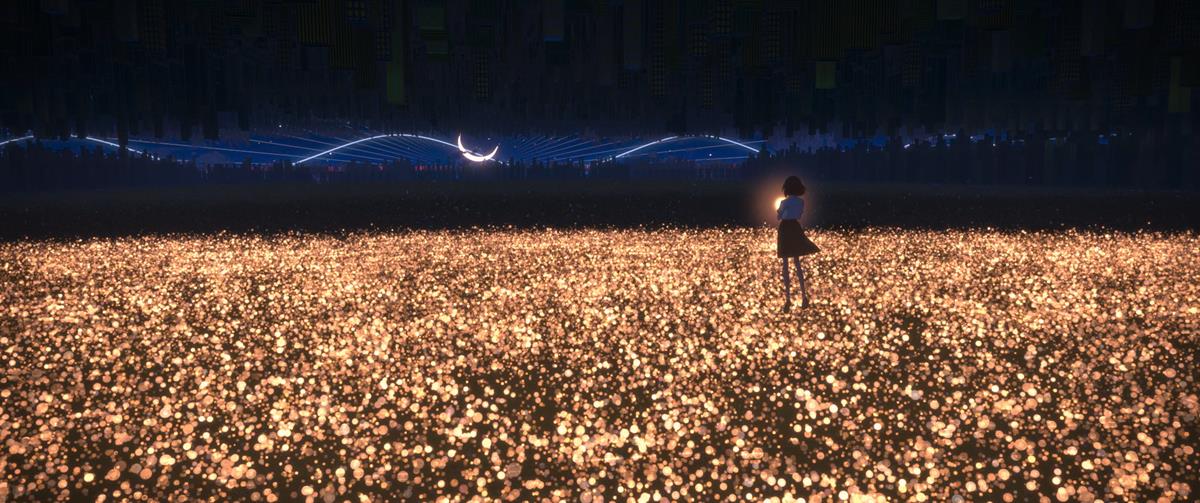
“I think there’s not too many interactions between US-based animation studios and animation production culture and Japan or other overseas-based animation studios, so I wanted to help change that in some ways because entertainment is shifting to this much more global medium of ideas.”
READ MORE: Belle is the virtual world anime that Mamoru Hosoda always wanted to make (Ploygon)
Want more? Watch the “Designing the World of U” featurette and a breakdown of the train station scene in the videos below:



